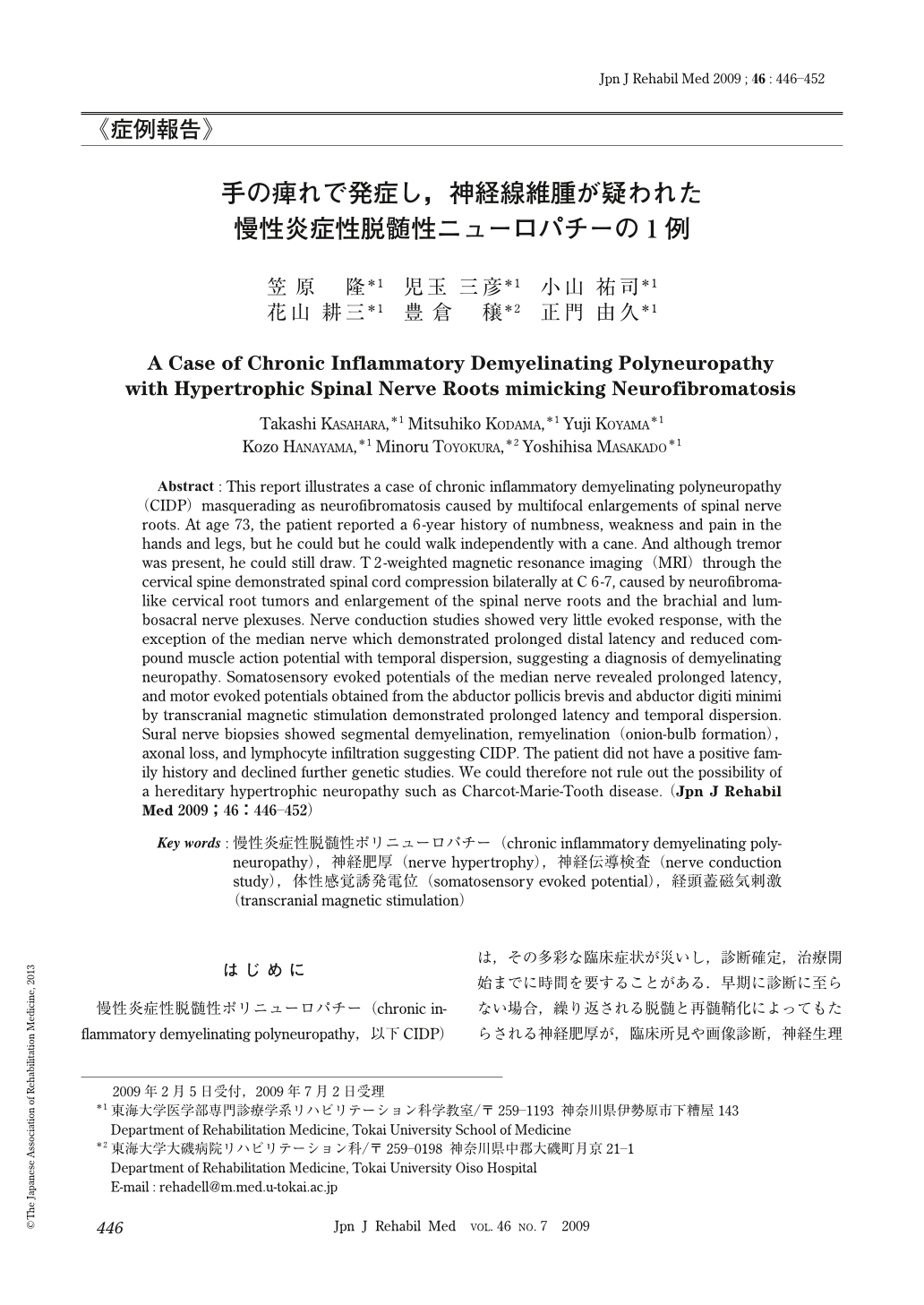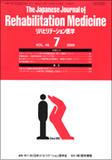Japanese
English
- 販売していません
- Abstract 文献概要
- 1ページ目 Look Inside
- 参考文献 Reference
はじめに
慢性炎症性脱髄性ポリニューロパチー(chronic inflammatory demyelinating polyneuropathy,以下CIDP)は,その多彩な臨床症状が災いし,診断確定,治療開始までに時間を要することがある.早期に診断に至らない場合,繰り返される脱髄と再髄鞘化によってもたらされる神経肥厚が,臨床所見や画像診断,神経生理学的検査の結果にも影響を及ぼすため1),いっそう診断を困難にする.今回,著明な神経肥厚所見により神経線維腫が疑われたCIDPの症例を経験した.神経生理学的検査を組み合わせることで特徴的な病態に迫ることができたため,若干の考察を加え報告する.
Abstract : This report illustrates a case of chronic inflammatory demyelinating polyneuropathy (CIDP) masquerading as neurofibromatosis caused by multifocal enlargements of spinal nerve roots. At age 73, the patient reported a 6-year history of numbness, weakness and pain in the hands and legs, but he could but he could walk independently with a cane. And although tremor was present, he could still draw. T2-weighted magnetic resonance imaging (MRI) through the cervical spine demonstrated spinal cord compression bilaterally at C 6-7, caused by neurofibroma-like cervical root tumors and enlargement of the spinal nerve roots and the brachial and lumbosacral nerve plexuses. Nerve conduction studies showed very little evoked response, with the exception of the median nerve which demonstrated prolonged distal latency and reduced compound muscle action potential with temporal dispersion, suggesting a diagnosis of demyelinating neuropathy. Somatosensory evoked potentials of the median nerve revealed prolonged latency, and motor evoked potentials obtained from the abductor pollicis brevis and abductor digiti minimi by transcranial magnetic stimulation demonstrated prolonged latency and temporal dispersion. Sural nerve biopsies showed segmental demyelination, remyelination (onion-bulb formation), axonal loss, and lymphocyte infiltration suggesting CIDP. The patient did not have a positive family history and declined further genetic studies. We could therefore not rule out the possibility of a hereditary hypertrophic neuropathy such as Charcot-Marie-Tooth disease.

Copyright © 2009, The Japanese Association of Rehabilitation Medicine. All rights reserved.


